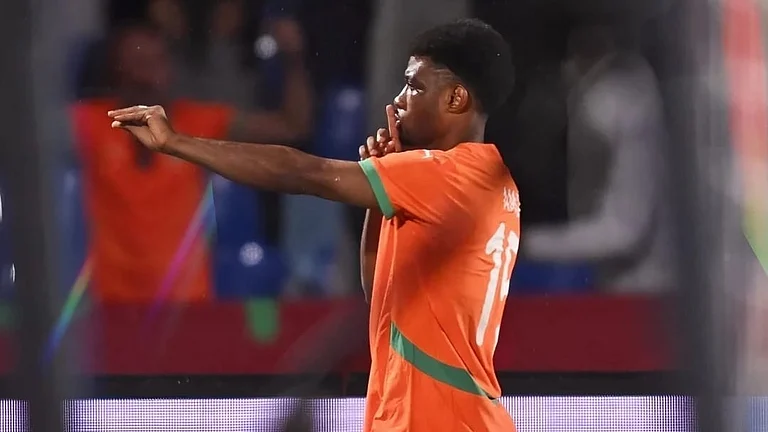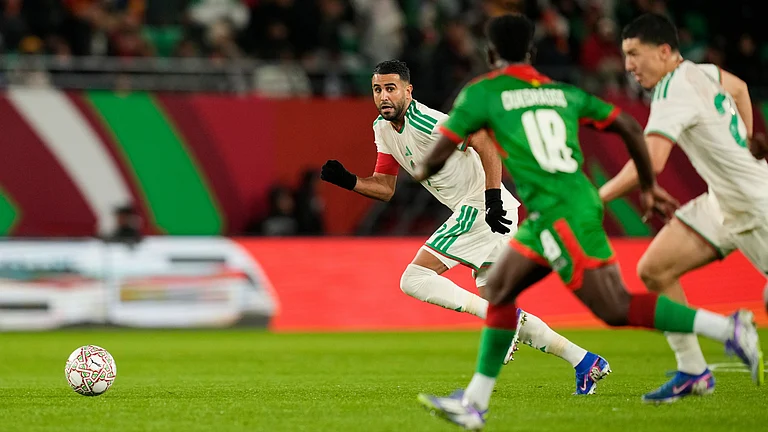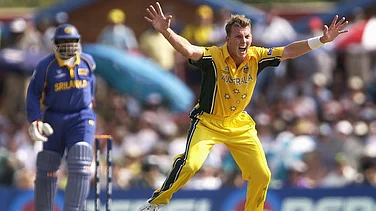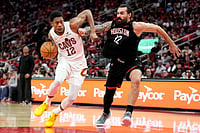And breathe.
The longest season in English top-flight history came to its conclusion on Sunday, with both Manchester United and Chelsea confirming their places in next season’s Champions League, while Bournemouth and Watford joined Norwich in ending their stays at England’s top table.
It was a season that nobody was even certain would finish a matter of months ago, an unprecedented campaign that will be remembered for right and wrong reasons. A season that saw a one-horse race to the title, two Englishmen leading the charge for the Golden Boot and three managers sacked at just one club.
As some sides begin their break before the new season starts in September, others look to finish their campaigns in style, be it in the FA Cup Final on Saturday or in Europe’s elite competitions during August.
Here at Stats Perform, we break down the headlines of this truly unforgettable season.
Liverpool – Title Winners
When people look back at the on-field element of the 2019/20 campaign, it will be most remembered as Liverpool’s season. After 30 long years of waiting, the Reds finally got their hands back on English football’s top crown, their 19th in all and first of the Premier League era.
Having finished as runners up on five occasions between 1991 and 2019, most notably earning 97 points last season without it being enough, few ever believed Liverpool would end up finally winning the Premier League as comfortably as they did.
It wasn’t dramatic, it wasn’t toe-to-toe with their nearest rival, it wasn’t a fight to the very end as most would have felt it needed to be if Liverpool were to usurp Manchester City’s recent dominance.
No, this was a procession. They spent a ridiculous 345 consecutive days at the summit from August 17, 2019, beating Southampton that day to claim top spot and never looking back.
Records were broken as Liverpool cruised their way to success. Eighteen consecutive league wins, 24 home victories in a row, 32 wins in their 38 games in all, beating all 19 other sides in the division before February, confirming the title with seven games to spare – all figures that no side in English top-flight history has ever bettered.

How did the Reds do it? How did Jürgen Klopp’s side march to the title with such ease?
The answer lies in their versatility, the ability to adapt to win any kind of game.
Liverpool ranked among the top three sides in this season’s Premier League for possession (63.5%), total successful passes (20,130), open play crosses attempted (671), high turnovers (252), pressed sequences (678), successful long passes (1,262), total number of open play sequences containing 10+ passes (682), direct attacks (80) and fast breaks (38).
Most other sides may excel at a handful of these areas but less so in others. The fact that Liverpool stand out across the board is telling. Stop the Reds playing one way and they’ll happily try another. They don’t just have a ‘Plan A’ that they rely on in every game.
Even breaking down the goals Liverpool have scored further highlights their adaptability. The Reds rank in the top two in this season’s Premier League for goals scored from set-piece situations (17 – excluding penalties), goals from fast breaks (10), first half goals (44), 90th-minute goals (six), headed goals (18), goals from outside the box (13), number of different goalscorers (17) – the list goes on.
Not only this, but Liverpool ended the season with the best shot conversion rate (14.4%) and highest difference between goals scored (85) and Expected Goals, xG (69.7 – a positive difference of 15.3). Adaptable and clinical.

Even when all hasn’t been going to plan for the Reds, they have recovered 19 points from losing positions, a number only Wolves (21) bettered in this season’s Premier League. This is a side with such attention to detail, such flexibility.
Klopp calls his players "mentality monsters". And that’s why they are champions.
Footballer of the Year – Jordan Henderson
If there is one man who epitomises exactly why Liverpool have finally picked up the Premier League trophy in 2020, it is their captain, their leader, Jordan Henderson.
Signed back in 2011 from Sunderland, few backed Henderson to become the player he is today. The Wearsider pipped the brilliant Kevin De Bruyne to the FWA Footballer of the Year Award on Friday, to top off a period in which he has captained Liverpool to glory in the Champions League, Super Cup, the Club World Cup and then England’s Premier League.
Henderson has become an irreplaceable cog in the Red machine that is Klopp’s Liverpool. And that is most highlighted by Liverpool’s record when their captain is absent.
In this season’s Premier League, the champions dropped more points in eight games without Henderson (eight) than in the 30 games in which he featured (seven). Some would argue that many of these came after the title was already guaranteed and therefore Liverpool dropped off slightly anyway, but Liverpool’s first defeat of the entire campaign, when the club were being talked about as potentially the next ‘Invincible’ side after Arsenal in 2003/04, came at Watford in February - a game Henderson missed.
And it isn’t just this season that Liverpool have been worse off without Henderson. Since the start of 2018/19, Liverpool’s Premier League win rate when Henderson plays is 85% (53/62). When he doesn’t, it drops to 64% (9/14).
Take it back further, to when manager Jürgen Klopp joined in October 2015. Since then, Liverpool have a 69% league win rate with Henderson (88/128) which reduces to 56% without (30/54).
And further still. Since Henderson joined Liverpool in 2011, he has won 60% of his league matches for the club (162/269), while the Reds only win 45% without him (33/73). Pick a timeframe, any timeframe since Henderson joined, and Liverpool are almost certainly better when their captain plays than when he doesn’t.

For Henderson to have such an impact on his side’s results speaks volumes about him.
But to merely look at results undermines Henderson’s growing quality on the pitch, where he embodies all of the versatility and improvement that has made Liverpool champions this season. His nine goal involvements (four goals, five assists) is comfortably his best return in a Premier League season under Klopp.
With Fabinho joining the club, Henderson has seen his position change from Liverpool’s deepest-lying midfielder to his more favoured box-to-box role. He has blossomed with this, winning possession 28 times in the final third of the pitch in the Premier League this season; of central midfield players, only Watford’s Abdoulaye Doucoure (29) has done so more, but the Frenchman has played over 900 more minutes than Henderson.
But it isn’t just winning possession that stands out with Henderson; it’s what he does when he recovers the ball that makes him so crucial to Liverpool.
He has initiated 20 open play sequences that have ended in Liverpool having a shot at goal this season. These 20 shots have had a combined xG value of 3.4 – in other words, Liverpool would have been expected to score between three and four goals based on the quality of chances created by Henderson starting their attacks.
Sounds modest. Until you factor in that only the established front three of Mohamed Salah (4.5), Sadio Mane (3.7) and Roberto Firmino (3.6) can better this figure in the entire Liverpool squad, all of whom having played at least 500 minutes more than their captain.
Nobody doubts their attacking qualities, so for Henderson to be so close to them is a strong marker of his contributions. The nearest of Liverpool’s midfielders to Henderson for this is Naby Keita (2.0).
Jamie Vardy Adds Golden Boot To His Premier League Fairy-Tale
Despite Leicester narrowly missing out on a top-four finish, striker Jamie Vardy ended the campaign on a personal high. In a season in which he became the first Foxes player to reach 100 goals in the top-flight since 1933/34 (after Arthur Lochhead), Vardy would eventually finish with a haul of 23 league goals.
That tally proved enough to secure him the Premier League Golden Boot award for the 2019/20 season. The accolade also had further merit for Vardy, who – at 33 years old – became the oldest player to win the award in the competition’s history.
In what was his sixth season playing in the Premier League, Vardy’s tally was just one fewer than he managed in 2015/16 when Leicester won the trophy. Indeed, his minutes per goal ratio this season (132) was almost identical to the campaign in which he spearheaded their historic Premier League title run (131).
Vardy’s run to scooping the Golden Boot was far from routine, however. The Leicester man finished just one goal ahead of Pierre-Emerick Aubameyang and Danny Ings, who both found the net on the final day of the season to keep the pressure on until the final whistles went up and down the country.
Although they were pipped to the post for the award, Aubameyang and Ings were arguably the two sharpest strikers in front of goal across the duration of the season. Accounting for the quantity and quality of chances they both had, the 22-goal pair ranked first and third in the competition in terms of overperforming their Expected Goals total.
While Danny Ings scored almost six goals more than expected, Aubameyang netted 22 times from an xG total of 14.75 – the biggest margin of overperformance by a player in a Premier League season since Salah in 2017/18 (+7.66).

Premier League Says Farewell To Three
The relegation zone claimed its first certainty on July 11, as Norwich’s fate was sealed following a 4-0 defeat to West Ham. The Canaries suffered the drop for the fifth time in the Premier League; the most of any team in the competition’s history.
Confirmation of their relegation came just under 10 months after they had beaten reigning champions Manchester City - a result which suggested they would be a serious contender to avoid the drop. But while they burned brightly in the beginning, with Teemu Pukki netting six goals in his first five Premier League games, Norwich were soon revealed to be under-equipped for the task.
Daniel Farke’s side lost 27 games in the Premier League this season – only four teams have ever suffered more defeats in a single campaign in the competition. They also ended 2019/20 with 10 consecutive league defeats; the third-longest losing run by a team in Premier League history.
Joining Norwich in the Championship next year will be Bournemouth and Watford, who both finished a point behind Aston Villa.
After finishing as high as ninth in the Premier League back in 2016/17, Bournemouth bid farewell to the Premier League after five seasons in the top flight.
Eddie Howe’s side became the only team to concede 60+ goals in five consecutive Premier League seasons, having done so again this term. Similarly, among teams to have played a century of games in the competition, Bournemouth have the highest goals conceded per game average of any team (1.7). Eventually, this became a weakness of their game they couldn’t overcome.

Completing the trio, Watford will return to the Championship following a turbulent season on and off the pitch. The Hornets became the first team in Premier League history to dismiss three different permanent managers in a single season, with Javi Gracia, Quique Sanchez Flores and Nigel Pearson all coming and going.
Under Pearson – the last of the three permanent managers to join – Watford won six of their 10 league games at Vicarage Road. Within this period between his first home match in charge in December 2019 and his last in July this year, only Liverpool and Manchester City won more home games in the Premier League. This still didn’t prove to be enough for the Hornets, however, who dismissed Pearson before the end of the campaign and fell to a 19th-place finish.
English Managers Return To Premier League In Numbers
The Premier League’s managerial scene had a distinctive look this season. Along with the decorated names fighting it out at the top of the competition, a rejuvenation of English coaches also took place. The end of the season confirmed that eight different English managers took charge of all 38 games: the most in the Premier League since the 2005/06 campaign.
Frank Lampard’s Chelsea were the highest finishers among this group of eight managers, with the Blues coming fourth in the table. Indeed, in sealing their place in the Champions League next season, Lampard also oversaw the highest finish by a debuting English manager in the Premier League since 1994/95, when Frank Clark finished third with Nottingham Forest.
Chelsea’s top-four finish was also notable by the amount of opportunities handed to the younger players by Lampard. He gave over 8.000 minutes of playing time to players aged 21 or under; the most of any team in the competition.

By contrast, Chris Wilder and Sheffield United gave the fewest minutes to players aged 21 or under (129), but that doesn’t tell the story of their season. The Blades finished ninth in their first season back in the Premier League, with their haul of 54 points being just one fewer than the other two newly-promoted teams combined.
While they finished the season with just 39 goals to their name, Wilder’s side excelled at the opposite end of the field, with only Liverpool, Manchester City and Manchester United conceding fewer goals than the Blades. Their total of 39 goals conceded was the fewest by a newly-promoted team in any of the 28 Premier League seasons to date.
Outside of the top half, there were further successes shared by the English managers who oversaw a full season. Among them, Sean Dyche led Burnley to their biggest win total in a Premier League campaign (15), Graham Potter’s Brighton recorded their highest points total in the competition (41), while a Steve Bruce-led Newcastle side recorded their fewest defeats in a top-flight campaign since 2011/12, when the Magpies finished fifth in the table.
Competitiveness Of The League – Pre And Post Lockdown
One aspect of the 2019/20 Premier League season that has perhaps gone unnoticed is just how competitive it has been. With Liverpool running away with the title and Norwich 13 points adrift at the bottom of the table, it’s easy to assume that this season has been somewhat predictable.
This isn’t the case.
The battle for both Champions League and relegation went down to the final day and there are significant barometers for both that suggest this season has been one of the toughest in years for most clubs.
Manchester United finished third with 66 points. This is the lowest by any side finishing in the Premier League’s top three since 1997/98, when Liverpool were third having ended the season on 65 points. Indeed, Chelsea finished this season fourth in the table having conceded 54 goals, the most by a side finishing as high since Norwich ended the inaugural 1992/93 Premier League season third, despite shipping 65 goals.
In fact, despite Liverpool’s dominance, only losing three matches as champions, the top four lost a combined 32 Premier League games this season. Since the Premier League became a 20-team league in 1995/96, only two seasons (1997/98, 37 & 2000/01, 33) have seen the top four lose more combined. Both were campaigns where England did not even have four places in the Champions League.
Look down the table, and Aston Villa survived relegation with just 35 points. In Premier League history, only West Brom in 2004/05 have ever avoided the drop with fewer (34).
These low returns of points up and down the table don’t suggest a lack of quality in the league – it is simply a sign of how difficult it has been for sides to gain points this season. That’s down to the competitiveness of the league. Any side has proved capable of beating any other on a given day. Think Watford beating Liverpool in February or Norwich’s win over Man City in September.
The lockdown certainly didn’t do much to help this. Below is a table ranking points-per-game differences by all Premier League sides before and after the season was suspended in March:

The winners and losers of the season’s temporary suspension are clear here. Points-per-game changes in this time have had huge ramifications up and down the table. West Ham, Bournemouth and Watford were all on course for the same points tally once the enforced break came in, but the Hammers saw huge improvements in their output to steer comfortably clear.
Meanwhile, Bournemouth and Watford both declined enough so that even a modest increase of 0.11 points-per-game on average by Aston Villa saw them safe at the Cherries’ and the Hornets’ expense.
Looking to the battle for Champions League places, and Leicester City resumed the season in June eight points clear of Manchester United in fifth. They then saw the third-worst points-per-game change in the league post-lockdown to lose this lead and finish four points adrift of a spot in the 2020/21 Champions League - a 12-point swing in nine games immediately after the season was thrown in doubt.
This was also exacerbated by Manchester United, who beat Leicester on the final day, enjoying the second-best points-per-game rise in the league after lockdown to leapfrog both the Foxes and Chelsea into third.
The impact of the unexpected hiatus between March and June cannot be understated. Ultimately, it only served to add to one of the most competitive and unpredictable Premier League seasons in years.


























